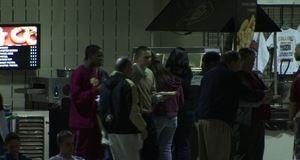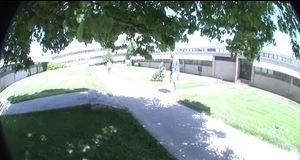VQiPS: Lighting Level
Guide to Defining Video Quality Requirements
Select:
| Getting Started | Use Cases | Use Classes | GUC Aspects | Usage Timeframe | Discrimination Level | Target Size | Motion | Lighting Level | GUC Questionnaire |

Lighting Level
Definition
Specifies the level of lighting you anticipate in a scene of interest.

Task: Facial Recognition.
Lighting levels can vary from very dark (nighttime, indoors) to very bright (daylight, spotlight), affecting the ability of the camera to capture the image.

Task: Facial Recognition.
The presence of both very bright areas and very dark areas in the frame simultaneously is known as high dynamic range, and can impair target recognition, as the next example shows.

Task: Facial Recognition.
Lighting level is an obvious aspect that impacts selection of video equipment and refers to light available to illuminate the scene of interest.
Scene Content
Consider: What level of lighting do you anticipate in a scene of interest?
| Scene Lighting Level | Content |
|---|---|
| Constant Lighting - Bright | At a comparatively bright level |
| Constant Lighting - Dim | At a comparatively dim level |
| Variable | Ranges from bright to dim |
Created September 30, 2016, Updated August 6, 2024

